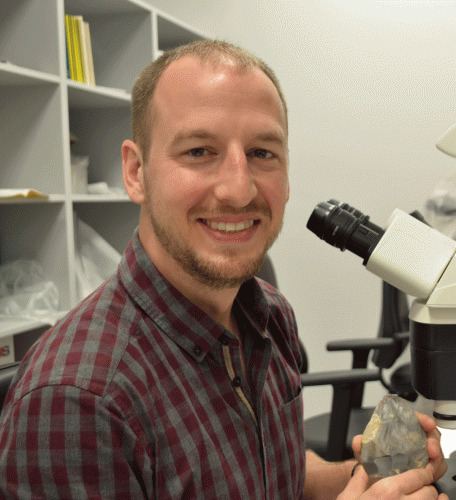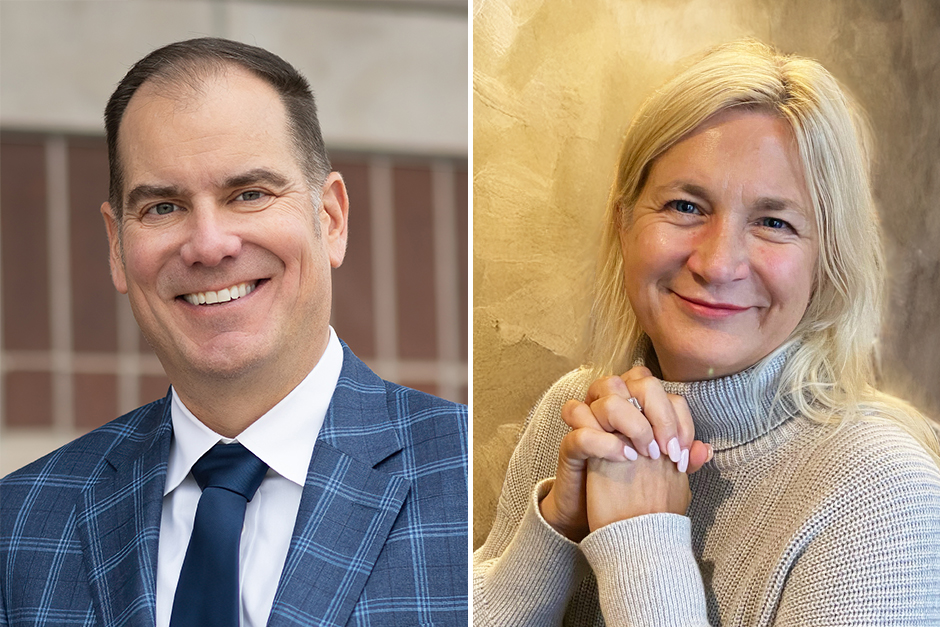Sorensen ’04 leads groundbreaking research on Neanderthal fire making
Andrew Sorensen ’04 has been fascinated by fire since childhood, yet it wasn’t until graduate school when fire became his academic passion and pursuit. In 2018 he and his colleagues published the identification of direct evidence for fire-making by Neandertals 50,000 years ago, the oldest ever documented.

“When I came to Leiden [University in the Netherlands], I wasn’t entirely sure what I wanted my master’s thesis topic to be, and as I discussed the possibilities with my advisor, he mentioned that we don’t know whether Neandertals could make fire even though there is plenty of evidence that they used it regularly, which instantly rekindled my interest in fire, so to speak,” Sorensen says.
Today Cornell College has an archaeology major but when Sorensen was on campus he studied geology and history. His second internship, with the Office of the State Archaeologist, gave him the opportunity to analyze prehistoric Native American sites excavated in nearby Palisades-Dows Nature Preserve during his Cornell archaeological field school under John Doershuk, Iowa’s state archaeologist.
That internship led to a job with the Office of the State Archaeologist upon graduation. During the six years he worked there he also traveled to the Netherlands on multiple occasions to work on archaeological excavations ranging from the Neolithic Age and Iron Age to the Roman and Medieval periods.
In 2011 he moved to the Netherlands to complete his master’s in palaeolithic archaeology and material culture studies at Leiden. Two years later he received funding to complete his doctorate at Leiden, which he successfully defended in 2018. Now he is completely settled in, married, and working on postdoctoral research identifying the earliest evidence of fire-making.
“My biggest contribution so far has been my article in Nature Scientific Reports presenting what we interpret as the earliest evidence of people regularly making fire in the world, these being Neandertals by at least around 50,000 years ago, using stone tools,” Sorensen says.
The article was covered in over 300 news stories online and in newspapers around the world, including The Washington Post, Los Angeles Times, The Atlantic, The Times of London, and Der Spiegel—as well as a live radio interview with the BBC World Service.
Last summer he was awarded a six-figure grant from the Netherlands Organization for Scientific Research for a postdoctoral project continuing his early fire research—this time into the earliest Homo sapiens entering Europe from Africa 45,000-20,000 years ago.
Sorensen is a member of the Pyroarchaeology Commission, an international group of scientists dedicated to early fire research, and has collaborated with diverse research groups throughout Europe. He also is the research-coordinator for the Auneau Fireplace Project in France, a fundamental study involving the controlled excavation and multi-method sampling of a circa 25,000-year-old hearth feature.
He says his biggest achievements have been completing his master’s and doctoral degrees, “though I would also include getting married in the Netherlands to my wife Jessie de Geus to be my best moment since Cornell. But careerwise, becoming an active member of the worldwide academic community within the subject of Human Origins has been very satisfying.”
Studying One Course At A Time at Cornell, he says, gave him skills for success in academia: “One Course At A Time has been very helpful in my academic career by providing study skills that allow for very focused work to be accomplished in a relatively short period of time.”
Like many Cornell students, Sorensen was involved in a wide range of activities. In addition to his two majors he was a work-study student for the Department of Geology, played ultimate frisbee, was active in the Phi Kappa Nu Greek group, and participated in wind ensemble, orchestra, steel drum band, and choir.
How would he describe his undergraduate college in Mount Vernon, Iowa?
“Cornell is a close-knit community of ambitious students and friendly, attentive instructors that fosters an active environment both for learning, but also for extracurricular activities and fun.”
Tags: archaeology, geology, history



